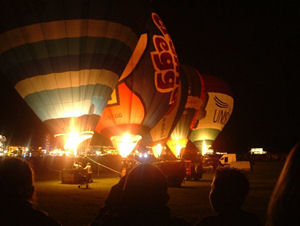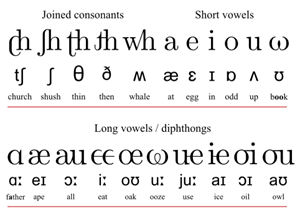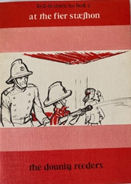Dates for your Diary
Museum opening times
The Museum is open to the public, free of charge:
Thursday* to Saturday 10am – 1pm
August 100 Club
This month’s prize numbers were drawn by two intrepid Pokemon Hunters(!) and the lucky winners are:-
No. 17 Nichola Hayward £20
No. 68 Lucy Harding £10
If you would like to join our 100 club and be in with a chance of winning, it costs just £1 a month. Ask at the museum for further details.
Voices of Abertillery
 Although wirelesses were about in the thirties, they weren’t all that much use. They were cumbersome affairs, usually with wires, accumulators to be charged, and so on. So, in the evenings there was always conversation and you learned to listen as a child and were involved in quite a lot. There were no record players and television sets. We listened to our aunts and great aunts and uncles telling us of various things. And what was going on all around. It was very interesting and I look back with a great deal of pleasure at those days. It was very often a case of being seen and not heard. They’d say ‘Be quiet now’, ‘You listen!’, ‘We’re not talking to you.’ But you learned a lot by listening to older people talking. [RR]
Although wirelesses were about in the thirties, they weren’t all that much use. They were cumbersome affairs, usually with wires, accumulators to be charged, and so on. So, in the evenings there was always conversation and you learned to listen as a child and were involved in quite a lot. There were no record players and television sets. We listened to our aunts and great aunts and uncles telling us of various things. And what was going on all around. It was very interesting and I look back with a great deal of pleasure at those days. It was very often a case of being seen and not heard. They’d say ‘Be quiet now’, ‘You listen!’, ‘We’re not talking to you.’ But you learned a lot by listening to older people talking. [RR]
The above is an extract from ‘Voices of Abertillery’ and is compiled by Simon Eckley & Don Bearcroft. It’s a compilation of memories from interviews of local people and is available to buy now from the museum for just £1 a copy. Pick up yours while stocks last.
Open Doors Day
Saturday 25th September 10am-4pm
As part of the National Open Doors event, the museum will be open from 10am until 4pm on 25th September and will be an opportunity to see behind the scenes, including demonstrations of how items are cleaned, marked and catalogued and with visitors welcome to try for themselves. Our café will be open all day serving hot drinks and cakes. Entrance will be free as usual.
Louisa Maud Evans - The Balloon Girl
If you’ve ever been to a hot air balloon festival then you will know that whether you are lucky enough to see any balloon launch or even a night glow show such as the one pictured below from Blackwood in 2004, is entirely dependent on the weather on the day. But back in the days of the balloon pioneers, they would learn the importance of weather the hard way…

In the summer of 1896, Cardiff was host to the Fine Arts, Industrial and Maritime Exhibition. It included displays of works of art, books and machinery as well as live shows. One of the shows was to be an aeronautical display comprising a hot air balloon though different to those we are used to seeing today. This hot air balloon would have no basket, just a trapeze bar with a wooden seat, and be attached to a parachute by a thin cord. The balloon would fly up to 8000 feet high before the performer would leap from the seat, trusting the parachute to detach from the balloon and open.
The hot air balloon was owned by one Auguste Eugene Gaudron and on 21st July 1896, over 100,000 people had gathered in Cardiff to witness the jump. Gaudron was an aeronaut himself and had taken to the sky in person at the exhibition but after landing on an outhouse in Splott, he looked for an assistant.
Lured by the exhibition, fourteen year old, Bristol-born Louisa Maud Evans, who had been given away at birth, had travelled to Cardiff in the hope of finding fame and fortune, and when she heard that Gaudron was seeking a balloonist for the stunt, she volunteered, claiming to be an experienced aeronaut. In fact this would be her first time in the air. Gaudron took her at her word and made no attempt to verify her claims.
Calling herself Mademoiselle Albertina and wearing a girls sailor suit, the balloon took off from Cathays Park. Soon after launch, it became apparent that something was very wrong. The wind had changed direction and was taking the balloon away from Cardiff and out towards the Bristol Channel. The onlookers could only watch in horror as Louisa was carried away. At 5000 feet poor Louisa had no choice but to jump but she landed in the sea and the weight of her clothes and the parachute pulled her under and she drowned.
It took three days to find Louisa’s body after it washed up at Nash, Newport and she was buried in Cathays Cemetery on 29th July 1896. Her memorial stone, which is still there today, was paid for by the people of Cardiff. It would not be the last time that Gaudron would lose an assistant in a similar accident, but it would be the last young child as, the following year and as a direct result of this tragedy, the Dangerous Performances Act of 1879 was amended to stop the exploitation of children.
Determined that Louisa would not be forgotten, author Rosemary Chaloner has written a book about her entitled The Balloon Girl though it is currently out of print.
Sally Murphy
Sourced from:-
Friends of Cathays Cemetery
The Free Library
BBC news
i.t.a. The 1960s Reading Experiment
ie wiʃh wꞓꞓ cɷd aull cum tɷ lɷkt at
træn stæʃhons tɷdæ.
Hands up if you can read and recognise the above for what it is? I know one person reading this with their hand up right now; my sister Alison! And for those of you who have no idea what I’m talking about (and you won’t be alone; even among teachers), it is written in i.t.a. which stands for initial teaching alphabet.
It was the brainchild of Sir James Pitman, whose grandfather, Issac Pitman, had invented a system of quick note taking, otherwise known as ‘Shorthand’. Unlike Shorthand though, i.t.a. used the traditional 26 letters of the alphabet but had additional letters (see below) to represent the sounds of certain letters or combination of letters.

Sir James believed he could help children learn to read faster if they were taught the sounds rather than the correct spelling of words and if you’re wondering why I’ve written i.t.a. in small letters, it’s because there were no capital letters in i.t.a.! If you haven’t worked it out, the rather nonsensical sentence at the start of this piece reads ‘I wish we could all come to look at train stations today’.
It is said that English is one of the hardest languages to learn with less than 20% of words pronounced the way they are spelt. For example if cough is pronounced cof, then surely a tree’s bough should be bof? Or how about take a bow (on stage) and a dickey bow? i.t.a. was designed to end these discrepancies and simplify reading for young children especially those with dyslexia. Which meant that good and could, which sound the same when spoken but look nothing alike when written, would appear the same in i.t.a. as gɷd and cɷd.
Though it was never widely adopted, it was first introduced in some parts of the UK in September 1961, making it 60 years old this month. It was only used in infant school age children and when they moved to junior school at age 7, it was expected that the child would move easily to traditional spelling. This of course meant that before leaving infant school, the children had to be taught ‘the code’ so they could make the transition but many puzzled junior school teachers must have found themselves reading, what was to them, gibberish!
It was in 1967 in Abertillery’s Gelli Crug Infant school, that my sister began to learn to read using i.t.a. I had attended the same school a few years earlier but had  been taught traditional methods. I recall her bringing books home to read which I found confusing but which my sister found easy! Also when it came time to drop the i.t.a. and start reading and writing in standard English, she again found it very easy; indeed our mother was astounded by how my sister was a far better speller than me despite being several years younger, so for her i.t.a was a success story. However it would seem my sister was the exception rather than the rule which is why i.t.a. was never widely used and dropped almost entirely by the early 1970s.
been taught traditional methods. I recall her bringing books home to read which I found confusing but which my sister found easy! Also when it came time to drop the i.t.a. and start reading and writing in standard English, she again found it very easy; indeed our mother was astounded by how my sister was a far better speller than me despite being several years younger, so for her i.t.a was a success story. However it would seem my sister was the exception rather than the rule which is why i.t.a. was never widely used and dropped almost entirely by the early 1970s.
The first of the two links below has, at the very bottom of the page, some very interesting comments by people who were taught (or suffered, depending on your viewpoint) i.t.a. To mark the 60th anniversary, I have managed to track down and purchase a child’s reading book from this experimental programme which I plan to donate to the museum. Think you could read it? Test yourself by checking out its inner pages on our Facebook page.
BBC News article
The Literacy Blog
Were you taught i.t.a? If so do get in touch.
Sally Murphy
HARRODS

By Diliff - Own work, CC BY-SA 3.0
Maybe, if you’re like me, you enjoy a good old shopping trip and a browse round to see if anything nice catches your eye. The gentlemen amongst you probably wouldn’t agree but definitely most of you ladies will know where I’m coming from on this.
How have we managed to get through the Pandemic with shops shut, orders to stay at home and general reluctance to go about our normal daily life? Online shopping, while very convenient, isn’t quite the same as seeing clothing and other items for real, with our very own eyes is it?
All this led me to thinking about one of the most famous shops in the world......Harrods.
Like other shops, Harrods is open again now the restrictions are gone and unlike some other shops, it seems to have survived the crisis. How was Harrods established? When did it all begin? How is it so successful and famous?
Harrods has its beginnings in 1824 when at the age of 25, Charles Henry Harrod started a drapers and haberdashers business in the London Borough of Southwark. In 1851 Charles Harrod left the smoky, cholera-ridden East End and took over a small shop in the Brompton district of Knightsbridge, on the site of the current store. It was Harrod’s son, Charles Digby Harrod, who built up the thriving business selling medicines, fruit and vegetables, stationery and perfumes. Adjoining buildings were acquired and by 1881 one hundred people were employed.
In 1883 Harrods booming fortunes were reversed when in December the store was burnt to the ground. Charles Harrod was, remarkably, still able to fulfil his Christmas deliveries that year and also make a record profit. The building was rebuilt on a grand scale with lavish decor. In the Edwardian period Harrods became the biggest and most luxurious department store in London. Some of its best customers included Oscar Wilde, Lillie Langtry, Charlie Chaplin and Laurence Olivier.
On 16 November 1898, Harrods debuted England's first "moving staircase" (escalator) in their Brompton Road store; the device was actually a woven leather conveyor belt-like unit with a mahogany and "silver plate-glass" balustrade. Apparently nervous customers were offered brandy at the top to revive them after their 'ordeal'!
The store, which occupies a 5-acre site, has 330 departments! Plenty of browsing to be had then!
Did you know that up until 2014 it was possible to buy an exotic animal from Harrods? ‘Pet Kingdom’, which opened in 1917, sold such livestock as a baby elephant, lions and camels. It’s hard to imagine this today but as times, attitudes and the law have changed the department had to close.
In 2010, Harrods was sold to the Qatari Royal family for a reported £1.5 billion so is no longer in British ownership. Apparently 35,000 customers call in to Harrods on an average day. If you’re ever in London, Harrods is definitely worth a visit. Apparently there is a dress code for customers, so if you decide to go there on a shopping spree - make sure to take your payment card or plenty of cash - and don’t turn up in your bare feet wearing cycling shorts.....you won’t be allowed entry!
Kathryn Taylor
Top Of Page
